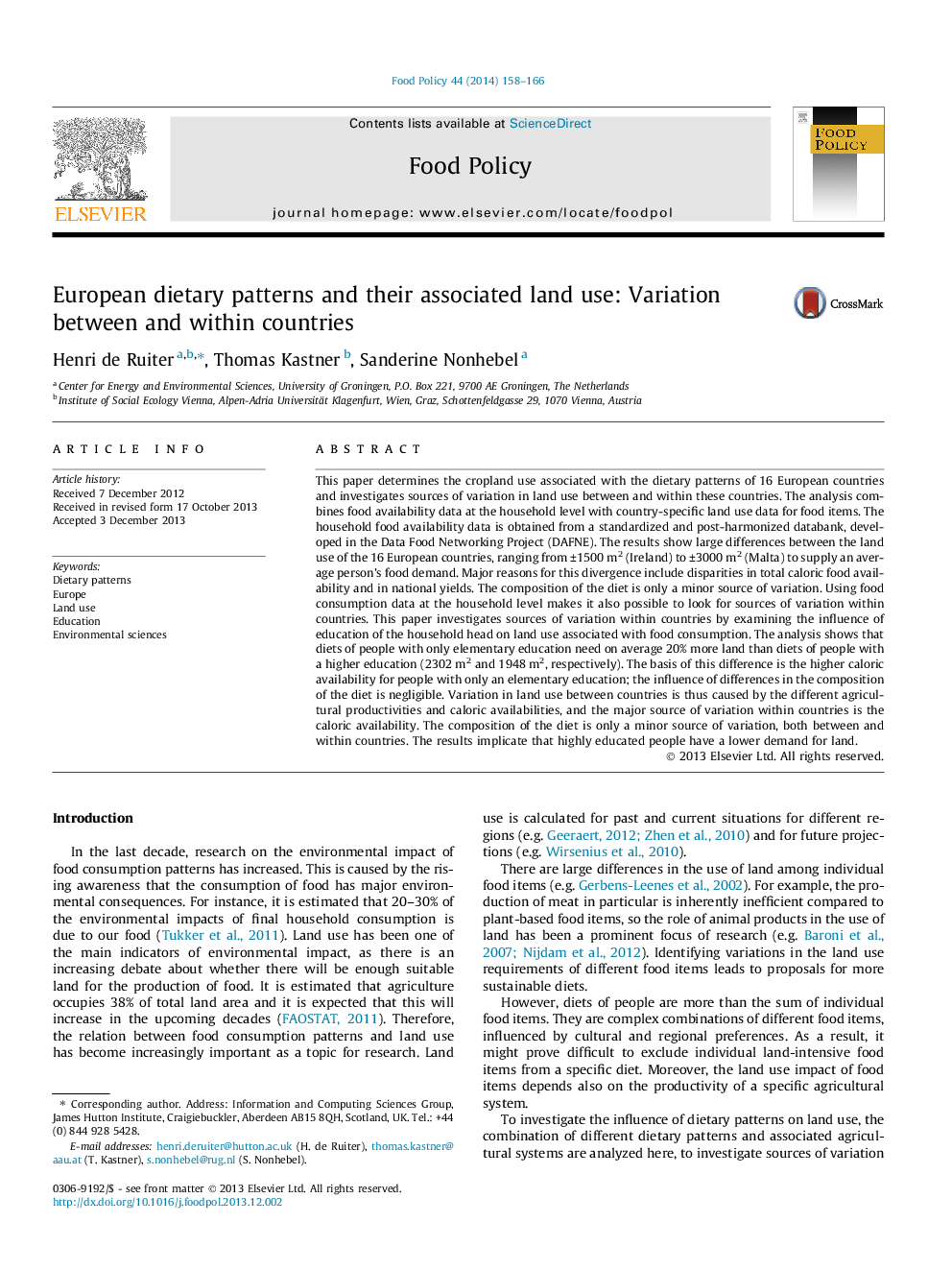| کد مقاله | کد نشریه | سال انتشار | مقاله انگلیسی | نسخه تمام متن |
|---|---|---|---|---|
| 5070565 | 1477031 | 2014 | 9 صفحه PDF | دانلود رایگان |
عنوان انگلیسی مقاله ISI
European dietary patterns and their associated land use: Variation between and within countries
ترجمه فارسی عنوان
الگوهای رژیم غذایی اروپا و استفاده از آنها در زمین: تفاوت بین و در داخل کشورها
دانلود مقاله + سفارش ترجمه
دانلود مقاله ISI انگلیسی
رایگان برای ایرانیان
کلمات کلیدی
الگوهای رژیم غذایی، اروپا، استفاده از زمین، تحصیلات، علوم محیطی،
موضوعات مرتبط
علوم زیستی و بیوفناوری
علوم کشاورزی و بیولوژیک
دانش تغذیه
چکیده انگلیسی
This paper determines the cropland use associated with the dietary patterns of 16 European countries and investigates sources of variation in land use between and within these countries. The analysis combines food availability data at the household level with country-specific land use data for food items. The household food availability data is obtained from a standardized and post-harmonized databank, developed in the Data Food Networking Project (DAFNE). The results show large differences between the land use of the 16 European countries, ranging from ±1500 m2 (Ireland) to ±3000 m2 (Malta) to supply an average person's food demand. Major reasons for this divergence include disparities in total caloric food availability and in national yields. The composition of the diet is only a minor source of variation. Using food consumption data at the household level makes it also possible to look for sources of variation within countries. This paper investigates sources of variation within countries by examining the influence of education of the household head on land use associated with food consumption. The analysis shows that diets of people with only elementary education need on average 20% more land than diets of people with a higher education (2302 m2 and 1948 m2, respectively). The basis of this difference is the higher caloric availability for people with only an elementary education; the influence of differences in the composition of the diet is negligible. Variation in land use between countries is thus caused by the different agricultural productivities and caloric availabilities, and the major source of variation within countries is the caloric availability. The composition of the diet is only a minor source of variation, both between and within countries. The results implicate that highly educated people have a lower demand for land.
ناشر
Database: Elsevier - ScienceDirect (ساینس دایرکت)
Journal: Food Policy - Volume 44, February 2014, Pages 158-166
Journal: Food Policy - Volume 44, February 2014, Pages 158-166
نویسندگان
Henri de Ruiter, Thomas Kastner, Sanderine Nonhebel,
